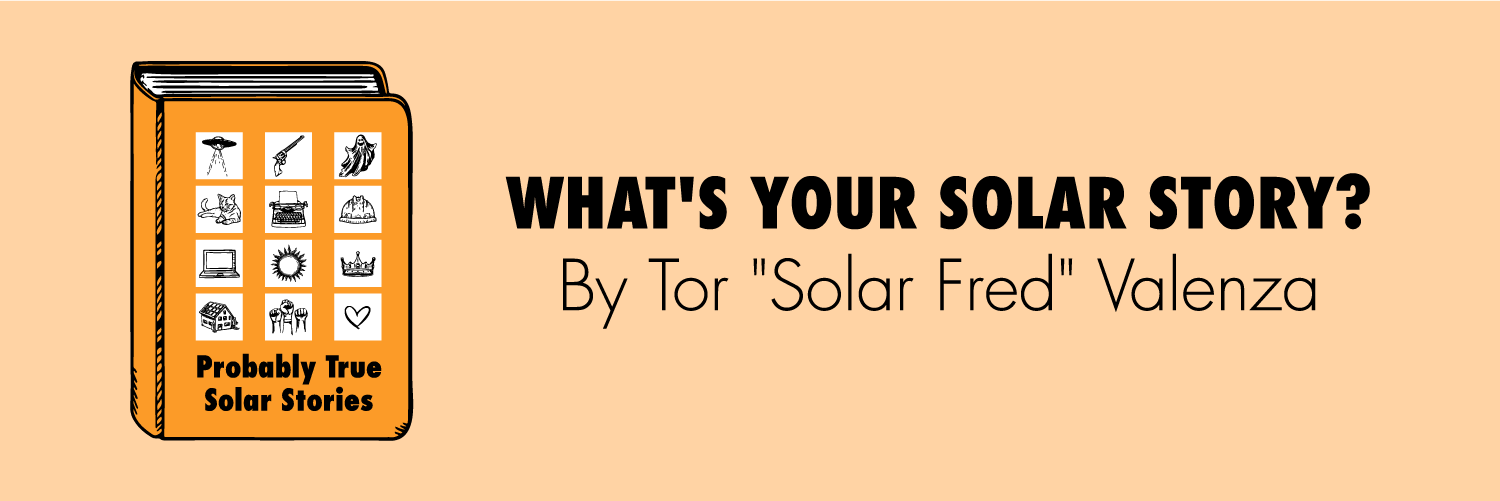The Solar Heist, or How I Got into the Solar Business, Parts 1-6
For those solar fiction fans who prefer the longer formats, we've combined all six episodes of "The Solar Heist" into a single two-hour version, including chapter headings.
Two neighbors meet unexpectedly at an Oakland, California coffee shop specializing in dark, rich coffee. Mazz owns a trucking business by day and is a thief at night. Charlie is a solar project developer by day and a guy with an international solar problem that can only be solved by Mazz. As the two grow to be friends, Mazz realizes that Charlie may also have a dangerous side gig that jeopardizes their friendship and their lives...
True Solar Takeaways
- The solar installation industry is made up of residential, commercial, and utility-scale installers.
- There's a U.S. law against importing solar panels made with forced labor.
- Some solar developers hire quality assurance companies to monitor the supply chains and factories.
- All solar installations, regardless of size, can now receive a U.S. 30% tax credit. Big developers can also receive other tax incentives.
- Chinese solar panels still have import tariffs, as of 2022.
- "Procurement" means sourcing, purchasing, and delivering equipment.
- Generally, large solar asset owners hire an experienced solar developer to take care of building the product. The solar developer may in turn hire an "EPC," which stands for engineering, procurement, and construction.
- After the writing of this story, it was reported that the U.S. government has confiscated gigawatts (GWs) of solar panel shipments.
- Large-scale developers typically only buy solar panels that are on a "Tier 1" list that's sold by Bloomberg. Even if the Tier 1 solar manufacturer is financially sound and honors the warranty, if you have a huge project, the replacement time and cost will be huge.
- With the passage of the IRA (Inflation Reduction Act of 2022), all solar projects, regardless of size, receive a 30% Investment Tax Credit (ITC) if they pay prevailing wages.
- Solar projects that are built on landfills, brownfields, and EPA superfund sites can get bonus ITCs.
- The solar industry is filled with acronyms and jargon.
- AHJ (Authorities Having Jurisdiction) are the permitting authorities that review and approve the building of solar projects
- PTO (Permission to Operate) is the official utility permission to start generating solar power on the utility's grid.
- PUC (or in California, the CPUC) stands for Public Utility Commission. The PUC regulates utilities and approves or modifies utility rates and sets policies for a state's public utilities.
- Single Axis Trackers (SATs) are used in most large solar projects today.
- Solar project owners are paid by utilities for every kilowatt-hour (kWh) generated by the solar farm.
- See all The True Solar Takeaways in the show notes of the original episodes:
- Visit ProbablyTrueSolar.com to sign up for the newsletter to learn about new episodes and live solar storytelling events.
- Support the show by visiting the merch store and buying a tee shirt!
- Learn how sponsors can be a part of Probably True Solar Stories and tell their own creative stories.
- Follow @SolarFred and/or @ProbTrueSolar on Twitter to discuss episodes
- Don't forget to:
- Subscribe to the show on your favorite podcast streaming service
- Rate
- Review, and
- Share!
Series Story: "The Solar Heist or How I Got into the Solar Business"
Probably True Solar Stories has a long solar "mini-series." Listen to the Solar Heist series here. Then explore the other shorter stand-alone stories below.





